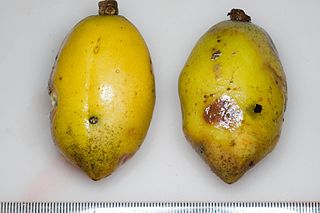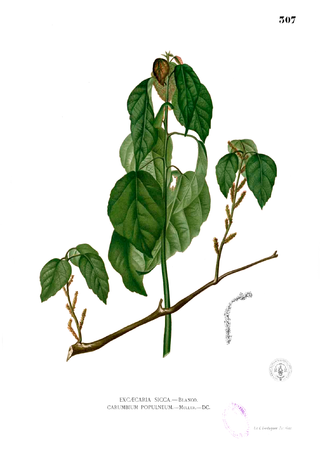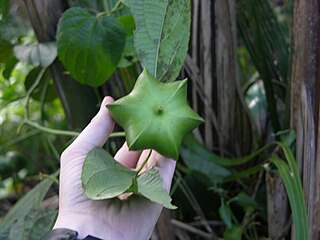Related Research Articles

The taxonomy of the Orchidaceae has evolved slowly during the last 250 years, starting with Carl Linnaeus who in 1753 recognized eight genera. De Jussieu recognized the Orchidaceae as a separate family in his Genera Plantarum in 1789. Olof Swartz recognized 25 genera in 1800. Louis Claude Richard provided us in 1817 with the descriptive terminology of the orchids.. The next step was taken in 1830-1840 by John Lindley, who recognized four subfamilies. He is generally recognized as the father of orchid taxonomy. The next important step was taken by George Bentham with a new classification, recognizing subtribes for the first time. This classification was first presented in a paper that Bentham read to the Royal Society in 1881. Then it was published in 1883 in the final volume of Genera Plantarum. The next great contributors were Pfitzer (1887), Schlechter (1926), Mansfeld (1937), Dressler and Dodson (1960), Garay, Vermeulen (1966), again Dressler (1981). and Burns-Balogh and Funk (1986). Dressler's 1993 book had considerable influence on later work.

Phyllanthaceae is a family of flowering plants in the eudicot order Malpighiales. It is most closely related to the family Picrodendraceae.

The Heliantheae are the third-largest tribe in the sunflower family (Asteraceae). With some 190 genera and nearly 2500 recognized species, only the tribes Senecioneae and Astereae are larger. The name is derived from the genus Helianthus, which is Greek for sun flower. Most genera and species are found in North America and South America. A few genera are pantropical.

Adenoclineae is a tribe of the subfamily Crotonoideae, under the family Euphorbiaceae. It comprises 2 subtribes and 6 genera.

Aleuritideae is a tribe of the subfamily Crotonoideae, under the family Euphorbiaceae. It comprises 6 subtribes and 14 genera.

Micrandreae is a tribe of the subfamily Crotonoideae, under the family Euphorbiaceae. It comprises 2 subtribes and 4 genera.
Ricinocarpeae is a tribe of the subfamily Crotonoideae, under the family Euphorbiaceae. It comprises 2 subtribes and 7 genera.

The Acalypheae is a tribe of the subfamily Acalyphoideae, under the family Euphorbiaceae. It comprises 12 subtribes and 32 genera.

Alchorneae is a tribe of plants in the subfamily Acalyphoideae, under the family Euphorbiaceae. It comprises 2 subtribes and 7 genera.
Epiprineae is a tribe of plants of the family Euphorbiaceae. It comprises 2 subtribes and 9 genera.

Plukenetieae is a tribe of plant of the family Euphorbiaceae. It comprises 3 subtribes and 14 genera. Tribe Plukenetieae (Benth.) Hutch. is a diverse pantropical lineage of ca. 17 genera and 350 species of twining vines and lianas, scandent to erect perennial herbs and subshrubs, and rarely shrubs and small trees.
Pycnocomeae is a tribe of plant of the family Euphorbiaceae. It comprises 2 subtribes and 7 genera.

Euphorbieae is a tribe of flowering plants of the family Euphorbiaceae. It comprises 3 subtribes and 6 genera.

Hippomaneae is a tribe of flowering plants of the family Euphorbiaceae. It comprises 2 subtribes and 33 genera.

The Caletieae is a tribe of plants under the family Picrodendraceae. It comprises 4 subtribes and 13 genera.

The Podocalyceae is a tribe of plants under the family Picrodendraceae. It comprises 3 subtribes and 3 genera.

The Elymniini is one of the tribes of the subfamily Satyrinae. If the subfamily Satyrinae elevate to family status, this tribe shall be treated as subfamily Elymniinae. Elymniini was formerly a large group, but recently, it is considered to be include only one genus, Elymnias, according to molecular phylogenetic analyses.

Euphorbiaceae, the spurge family, is a large family of flowering plants. In English, they are also commonly called euphorbias, which is also the name of a genus in the family. Most spurges, such as Euphorbia paralias, are herbs, but some, especially in the tropics, are shrubs or trees, such as Hevea brasiliensis. Some, such as Euphorbia canariensis, are succulent and resemble cacti because of convergent evolution. This family has a cosmopolitan global distribution. The greatest diversity of species is in the tropics, however, the Euphorbiaceae also have many species in nontropical areas of all continents except Antarctica.
References
- ↑ "Malpighiales". www.mobot.org. Retrieved 2022-06-05.